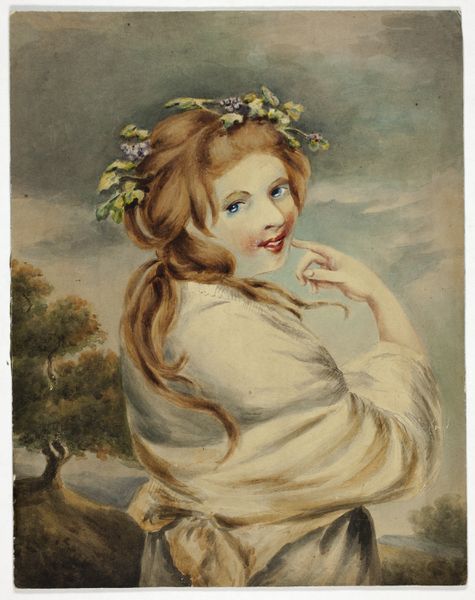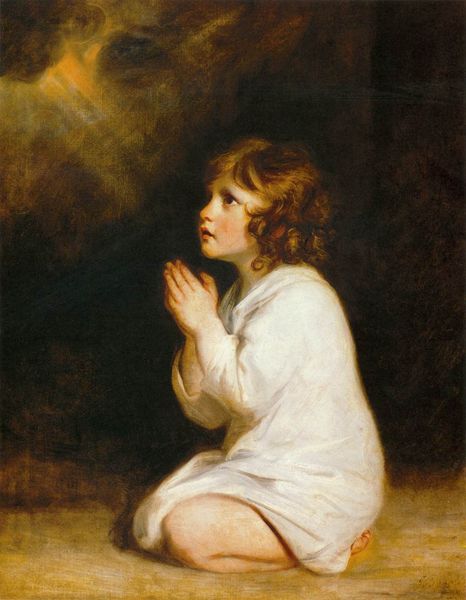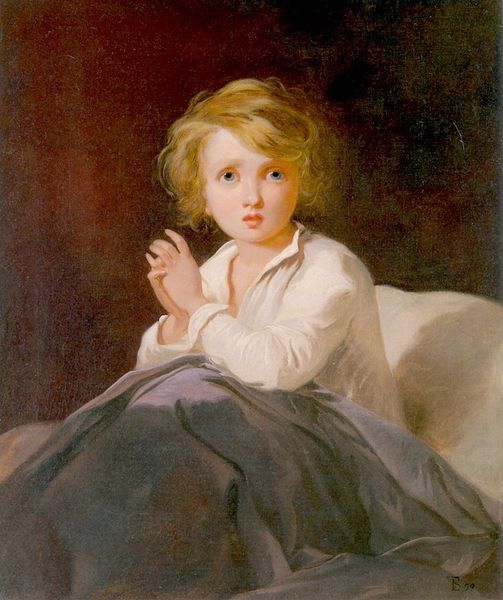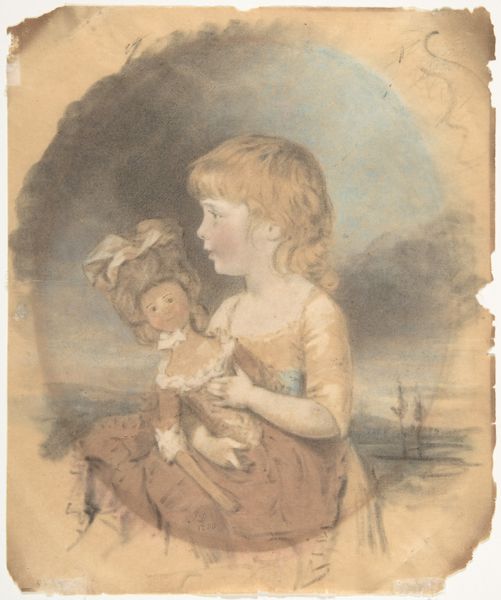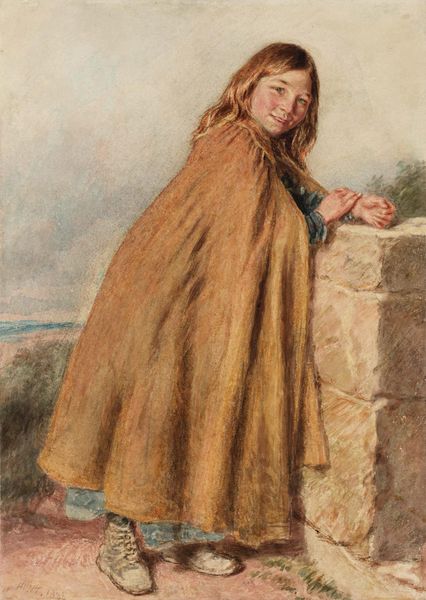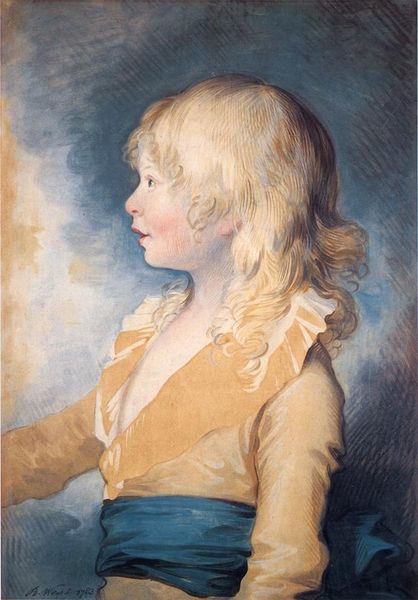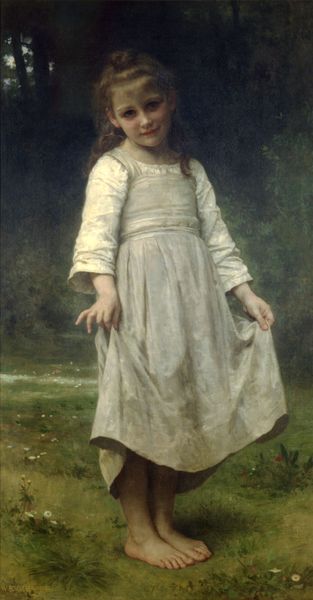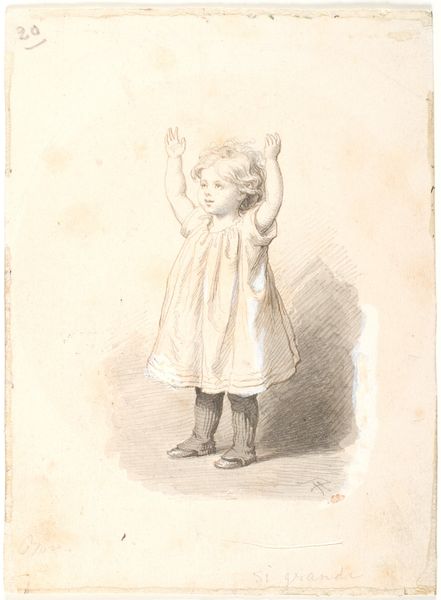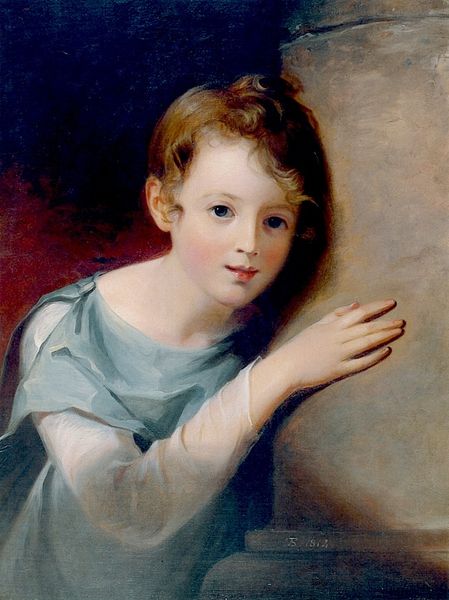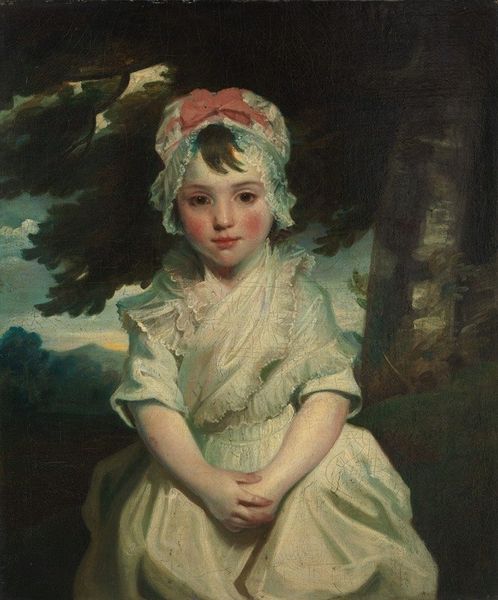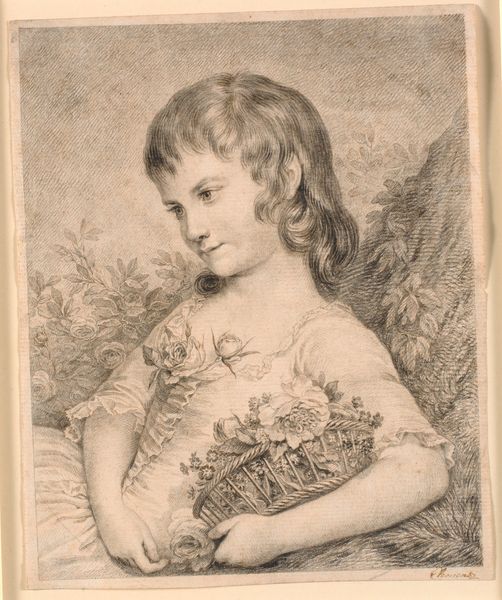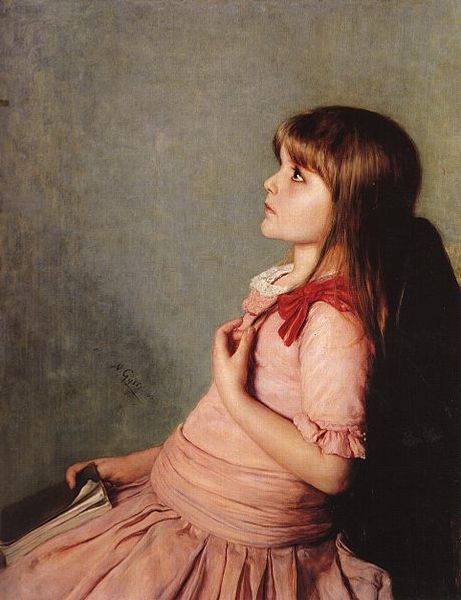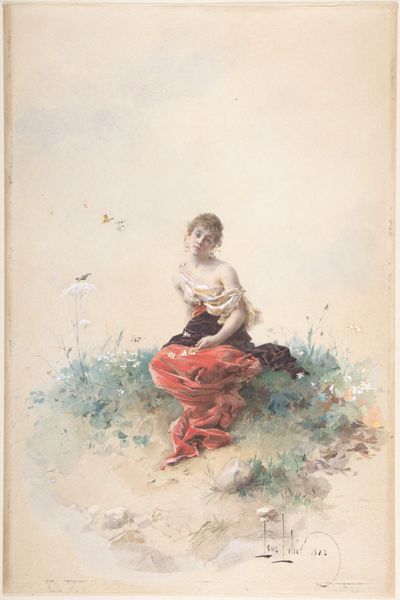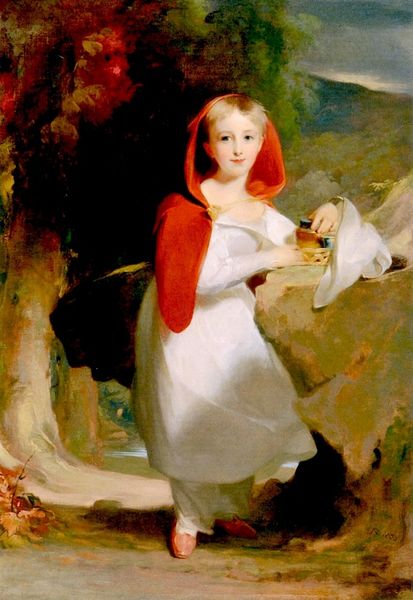
drawing, print, paper, watercolor, graphite
#
portrait
#
drawing
# print
#
figuration
#
paper
#
oil painting
#
watercolor
#
england
#
romanticism
#
water
#
graphite
#
portrait drawing
#
genre-painting
#
academic-art
#
portrait art
#
watercolor
Dimensions: 174 mm × 131 mm
Copyright: Public Domain
Curator: Looking at Elizabeth Murray's watercolor, graphite and ink drawing from 1848 entitled, "Child Praying" feels incredibly intimate. I’m immediately struck by the girl's upward gaze and the simple composition, placing the figure in an ambiguous landscape beneath a pale sky. Editor: My first thought is how Romantic and sentimental it seems, with a hint of genre painting through its approach to figure and landscape. It invites quiet contemplation. The girl's posture creates a visual plea—her clasped hands, the bowed head... It's masterfully constructed for evoking pathos. Curator: Considering this piece within its historical context, the mid-19th century in England saw vast social changes. Religious sentimentality became quite common, especially within domestic portraiture like this. What kind of person do you imagine would own this image, and what would it signify? Editor: Well, if we consider the application of watercolor on paper and how portable these items can be, such drawings offered sentimental and pictorial value for the family as personal tokens rather than some kind of devotional subject. I note also how the wash of colors evokes a very dreamlike—or ethereal state of emotion—but that her feet being bare root her in a more visceral realm. Curator: It's fascinating how you focus on her feet to understand her earthly condition. For me, that positioning—of a barefoot girl seemingly outside, exposed to the elements, yet in prayer—speaks to both the vulnerability and resilience often attributed to childhood, especially during a period of increased industrialization where child labor was rampant. Murray's composition is poignant. Editor: True. However, do you see the way her dress falls? Observe the highlights there and the very slight application of dark shadows giving three-dimensionality to a very flat surface... In doing so, she still manages to depict her garments without losing their essence as a form on paper—one could also see a direct relationship between color and emotional response at the core of her piece. Curator: And within this framework, can you feel that Murray aimed to provide this image not as just an intimate family memento, but rather as an aspirational, idealized form of innocence in times of great societal shifts? This connects her work to larger narratives around childhood, morality, and representation during her time. Editor: Certainly, she sought to evoke the emotions. The drawing succeeds as it still invites a rather close visual contemplation through its masterful employment of simple washes on a smooth surface—and it offers me peace knowing it still resides here at the Art Institute of Chicago today. Curator: Agreed. Examining its historical conditions provides us insight into societal narratives, yet its composition and materials— watercolors, paper, ink—remain effective carriers of her emotive expressions towards an image that continues to move its viewers in multiple ways.
Comments
No comments
Be the first to comment and join the conversation on the ultimate creative platform.
